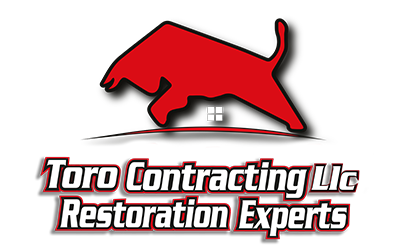Fallen trees can qualify as storm damage for insurance purposes if they’re caused by covered perils like wind, lightning, hail, or ice storms. Your homeowner’s policy typically covers removal costs ($500-$1,000 per tree) when the tree damages insured structures or blocks access. However, if the tree was already dead, diseased, or neglected before the storm, your claim might be denied. Documentation of the tree’s pre-storm condition and weather data will significantly impact your claim’s success.
Key Takeaways
- Fallen trees are considered storm damage when caused by named perils like wind, lightning, hail, or ice storms under standard homeowners policies.
- Insurance coverage applies only if the fallen tree damages insured structures or blocks access to the property.
- Documentation proving storm causation is critical, including photographs, weather reports, and professional assessments from arborists.
- Trees that fell due to pre-existing issues like disease, decay, or neglect are typically excluded from storm damage coverage.
- Most policies limit tree removal coverage to $500-$1,000 per tree with maximum benefits of $1,000-$2,500 per incident.
How Insurance Companies Define “Storm Damage”
Insurance companies typically categorize storm damage according to specific criteria that determine coverage eligibility under standard homeowners policies. When evaluating fallen trees, insurers assess whether the damage resulted from named perils like wind, lightning, hail, or ice storms—common elements in storm damage definitions.
Your policy’s language precisely outlines what constitutes covered “storm damage.” Most insurers require evidence that weather events directly caused the tree’s fall, not pre-existing decay, disease, or neglect. Documentation is essential during insurance claim processes, including photographs, meteorological reports, and professional assessments.
You’ll need to demonstrate the tree was healthy before the storm event. Claims adjusters will investigate whether the damage was sudden and accidental—hallmark characteristics of coverable incidents—versus gradual deterioration, which insurers typically exclude from coverage. Understanding these technical distinctions helps you navigate claim submissions effectively.
Common Policy Coverage for Fallen Trees
While most standard homeowners policies cover tree removal and associated damages, specific coverage limitations vary significantly between insurers and policy types. Typically, policies cover fallen tree removal costs only when the tree damages covered structures or blocks a driveway or accessibility ramp. Coverage limits generally range from $500 to $1,000 per tree, with maximum benefits of $1,000 to $2,500 per incident.
Your policy may exclude damage from preventable situations, such as dead trees you failed to remove before a storm. When processing fallen tree insurance claims, insurers will assess whether the tree was properly maintained and if the damage resulted directly from weather events. Coverage often excludes fallen trees that don’t damage structures or impede access, regardless of cleanup costs. Review your specific policy details to understand your coverage parameters before storms occur.
Determining Liability When a Neighbor’s Tree Falls
When your neighbor’s tree falls onto your property, determining liability hinges on several key factors rather than simple property boundaries. Generally, if the tree was healthy before it fell during a storm, it’s considered an “Act of God,” and your own insurance would cover the damages regardless of tree ownership.
However, if you can prove the tree was diseased, decaying, or clearly hazardous before falling, your neighbor may be liable for the damage. Most jurisdictions establish neighbor responsibilities that include reasonable maintenance of trees to prevent foreseeable harm. Documentation is essential—photographs of the tree’s condition before it fell, arborist reports, and previous written communications requesting tree removal can strengthen your claim. Insurance companies typically investigate these factors before determining whether your policy or your neighbor’s liability insurance will cover the costs.
Pre-Existing Conditions vs. Storm Damage
Distinguishing between pre-existing tree conditions and actual storm damage presents a critical assessment challenge in liability cases. Insurance adjusters typically evaluate whether the tree showed signs of decay, disease, or structural weakness before the storm event. You’ll need documentation proving the tree’s health prior to the storm impact to counter claims of pre-existing damage.
Arborists can identify telltale indicators that separate gradual deterioration from sudden storm-induced failure. These include: fungal growth predating the storm, extensive internal decay, previous significant lean, and visible root plate issues. Conversely, healthy trees with clean break patterns, twisting damage, or multiple failure points typically indicate legitimate storm damage.
Your insurance coverage may be denied if evidence suggests you neglected maintenance of a visibly compromised tree, regardless of whether a storm ultimately caused its collapse.

Removal Costs: What’s Typically Covered
Your insurance policy’s specific language determines which tree removal costs qualify for coverage after storm damage. Coverage typically applies when a tree impacts insured structures, while trees that fall without damaging property often remain your financial responsibility. You’ll need to evaluate your policy’s deductible amount against the total removal costs to determine if filing a claim makes financial sense for your situation.
Insurance Policy Specifics
Most standard homeowners insurance policies cover tree removal costs only under specific circumstances, despite the common misconception that all fallen tree scenarios qualify for reimbursement. You’ll need to review your policy’s fine print to understand the insurance exclusions that may apply to your situation.
Typically, insurers only cover removal when a tree damages insured structures or blocks access to your property. Policy limitations often include caps of $500-$1,000 per tree, regardless of actual removal costs. Your deductible will apply to these claims, potentially making smaller incidents not worth filing.
Be aware that trees falling due to negligence, disease, or age-related deterioration usually aren’t covered. Likewise, if a tree falls but doesn’t damage structures or create access issues, you’ll likely bear the full removal expense yourself.
Deductible vs. Coverage
When considering whether to file a claim for fallen tree removal, homeowners must carefully weigh their deductible amount against the actual coverage limits provided by their policy. If your deductible exceeds the cost of tree removal, filing a claim isn’t financially advantageous. Most standard policies include removal costs only when the tree damages an insured structure or blocks access to your property.
Be aware of common coverage exclusions related to fallen trees. Policies typically won’t cover removal of trees that fall due to neglect, disease, or routine maintenance needs rather than storm damage. Additionally, deductible limits often apply per incident, not per tree. When multiple trees fall during a single storm event, your claim may still be subject to just one deductible, potentially making filing worthwhile despite higher removal costs.
Property Damage Assessment Process
After a severe storm has toppled trees onto your property, conducting a thorough damage assessment becomes your critical first step toward recovery and insurance claims. Professional property inspections should document all visible damage before any cleanup begins.
When performing your damage assessment, follow these essential steps:
- Capture comprehensive photo and video evidence from multiple angles
- Document all affected structures, including secondary buildings and fences
- Measure and record dimensions of fallen trees and damaged areas
- Note any utility disruptions or safety hazards requiring immediate attention
Contact your insurance provider immediately with this documentation. Most adjusters will conduct their own inspection within 48-72 hours post-report. Maintain detailed records of all communications and retain copies of submitted evidence to facilitate claim processing and prevent disputes over damage extent and causation.
Documentation Needed for Fallen Tree Claims
Proper documentation forms the foundation of successful fallen tree insurance claims, building upon the initial assessment process previously outlined. You’ll need to compile comprehensive evidence including dated photographs capturing the fallen tree from multiple angles, clearly showing its position relative to structures and property lines.
Insurance carriers require specific documentation requirements that typically include:
- Written estimate from certified arborists or tree removal services
- Police reports (if applicable)
- Weather data confirming storm conditions
- Pre-damage property photos (if available)
- Inventory of all damaged personal property
The claim processes demand meticulous record-keeping of all communications with insurance representatives, including names, dates, and discussion summaries. Maintain receipts for emergency mitigation expenses, as these may qualify for reimbursement under your policy’s additional living expenses provision.
Special Considerations for Tree-Related Structural Damage
Tree impacts on buildings present unique structural challenges that extend beyond surface-level damage evaluation. When evaluating tree-related structural damage, you’ll need to conduct a comprehensive inspection that addresses both visible and concealed compromises to structural integrity.
Insurance adjusters typically focus on four critical areas when evaluating tree damage:
- Foundation displacement or cracking caused by root systems
- Roof truss damage that might not be immediately visible from exterior inspection
- Load-bearing wall compression requiring specialized engineering evaluation
- Chimney or structural column misalignment that compromises overall stability
Prior tree health documentation can significantly impact your claim outcome. Dead or diseased trees that fall during storms may receive different coverage consideration than healthy specimens toppled by extreme weather. Document pre-storm tree health through arborist reports or property maintenance records whenever possible.
When to File a Claim vs. Paying Out-of-Pocket
Determining whether to file an insurance claim or cover tree damage expenses out-of-pocket requires careful financial analysis beyond the immediate assessment of structural impacts. Calculate your deductible amount against the total repair costs—if damage barely exceeds your deductible, paying out-of-pocket may be more economical when considering potential premium increases.
Effective claim strategies include documenting all damage thoroughly with photographs and obtaining multiple repair estimates before filing. Consider the timing of your claim; multiple claims within a short period might trigger higher premiums or even non-renewal. For minor tree damage, tracking out-of-pocket expenses for possible tax deduction purposes may provide financial relief without affecting your insurance standing.
Your claim history remains on insurance records for 3-7 years, making strategic decisions about when to file particularly important for long-term financial planning.
Frequently Asked Questions
Does Homeowners Insurance Cover Disease-Killed Trees That Fall During Storms?
You’d think insurance companies might show sympathy for your poor deceased tree, but don’t hold your breath. Homeowners insurance typically doesn’t cover trees killed by disease that fall during storms. The disease impact is considered a maintenance issue, not sudden damage. A professional tree assessment could have identified the compromised structural integrity beforehand. Most policies specifically exclude gradual deterioration, regardless of when the fall occurs. Coverage generally applies only to healthy trees damaged by covered perils like wind or lightning.
How Long After a Storm Can I File a Tree Damage Claim?
Most insurance policies require you to file tree damage claims promptly, typically within 30-60 days after the storm event. You’ll need to document the damage immediately with photos and written details. The claim process requires notification to your insurer, completion of claim forms, and potentially an adjuster inspection. Check your specific policy language, as some insurers impose stricter deadlines. Delayed reporting might result in denial if the insurer can’t properly investigate causation.
Will My Insurance Rates Increase After Filing a Fallen Tree Claim?
Your insurance rates might increase after filing a fallen tree claim, though this depends on several factors including your prior claim history, policy specifics, and insurer’s underwriting guidelines. Some companies offer claim forgiveness programs that prevent rate increases for first-time claims. During the claim process, you’ll need to document the damage thoroughly and submit it promptly. Consider consulting your agent about potential premium impacts before filing, especially for claims just above your deductible amount.
Can I Keep the Wood From Fallen Trees Insurance Pays to Remove?
You typically have wood ownership rights to trees on your property even when insurance covers removal. Most insurance policies focus on funding the tree removal process, not claiming the resulting wood. Review your specific tree removal policies with your insurer to confirm, as some contracts may contain exceptions. For clarity, explicitly state your intention to retain the wood before contractors arrive, as this prevents misunderstandings about disposal procedures during the cleanup operation.
Are Fruit-Bearing or Ornamental Trees Valued Differently for Insurance Purposes?
Like crown jewels in your garden’s treasury, fruit-bearing and ornamental trees are indeed valued differently for insurance purposes. Fruit tree valuation typically accounts for age, species, yield potential, and replacement costs. Ornamental tree assessment considers aesthetic value, maturity, species rarity, and location on your property. You’ll find most insurers use specialized formulas that factor in these distinctive characteristics when calculating compensation, rather than applying standard timber valuations used for common shade trees.






